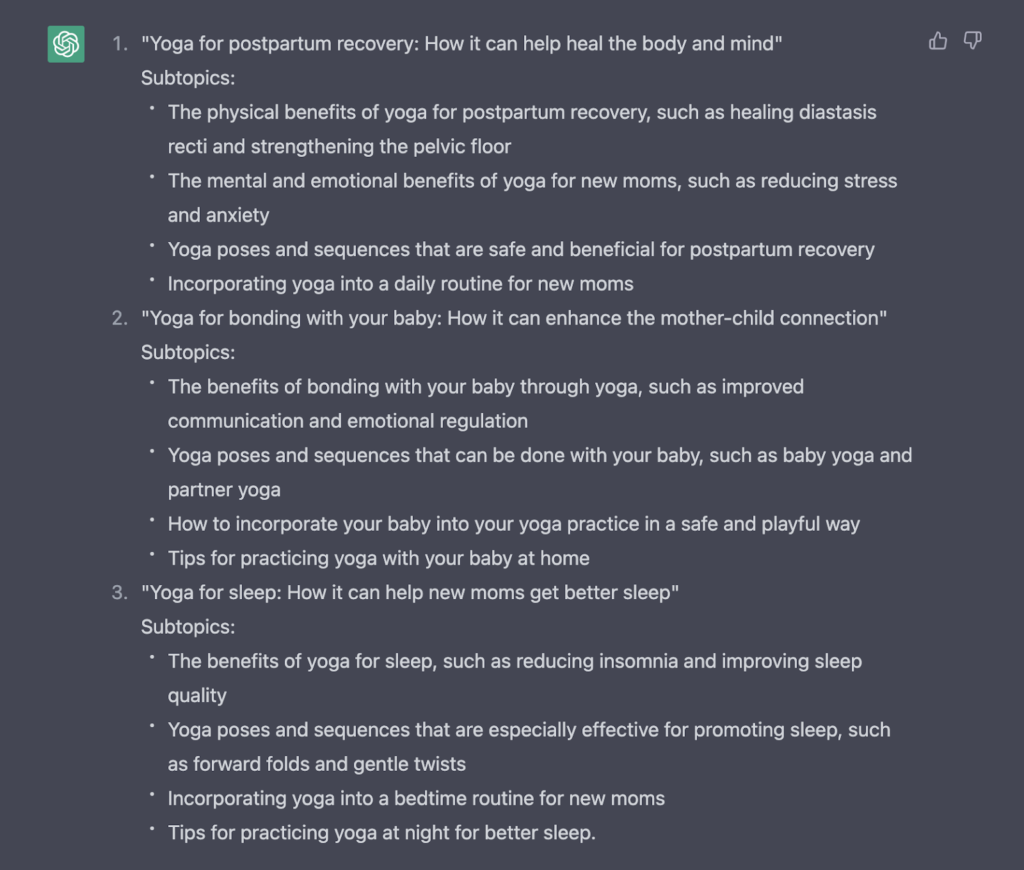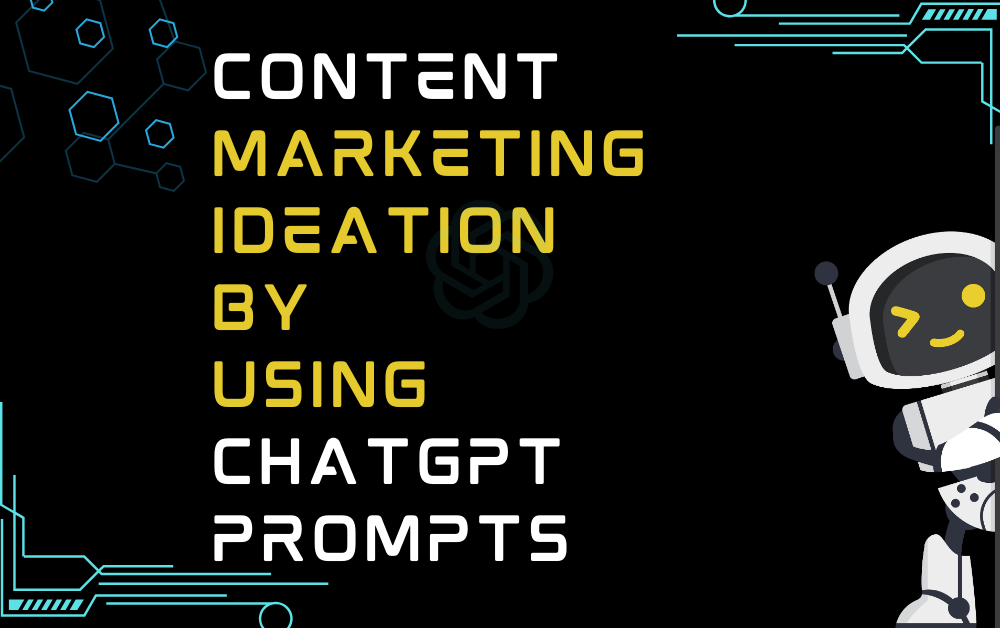AI-generated or AI-augmented content is one of the hottest topics and biggest use cases for AI in marketing right now.
Generating ad copy at scale, writing emails, and creating social posts are only the tip of the iceberg. App marketers can effectively use AI to not only help write content, but to help with ideation, briefs, analysis, editing, translation… the list goes on!
But here’s my BIG disclaimer: “help” is the operative term here. I strongly recommend against using AI as an end-to-end solution for your content needs, because it cannot replace human strategizing and creativity.
Now let’s explore some of the most prominent use cases for ChatGPT in content marketing.
Generate new ideas (or riff off of existing ones)
Marketing done right doesn’t start with “I want to run a campaign” or “I want to write a post for Facebook”. It starts with a problem that you or your customers are trying to solve.
You can devise a prompt to help brainstorm a list of content ideas to fill in any gaps.
First, set the stage in as much detail as possible:
Then define your parameters:
- Use non-conventional examples
- Integrate humor in the ideation phase
- Utilize high-volume and low competition keywords
- Use the following list of ideas as inspiration: [paste your existing list of ideas]
Lastly, format the answer:
- Generate a list of subtopics for every topic generated
- Format it into a table
- Format the list as a CSV in a code box
- Format the results in a numbered list
Bringing that all together, we have the following prompt:
Here’s what I got:

There are so many ways (and formats) in which you could use the above ideas… from campaigns to blog posts, and from emails to in-app messages. The sky’s the limit.
Create campaign copy
Whether it’s writing an ad, an email, a text message, or even a blog post, ChatGPT can help.
Keep in mind that effective copy speaks to the human experience and tells a compelling story, which isn’t exactly ChatGPT’s specialty. But with the right prompts, it will help you do most of the heavy lifting.
Here’s how.
First, set the stage by describing where your content will live and what action you want your user to take:
For the medium and format, you can try different combinations like:
- Facebook captions
- Email subject lines
- SMS text copy
For key message, you might want to think about things like:
- Problems your app solves
- Benefits of your app
- Features your users haven’t tried yet
- New feature releases or product updates
- A special promotion
- Highlights versus your competition
For desired action, consider your goals:
- Re-engage with my app
- Buy something in my app
- Install my app
Then, describe your voice and tone:
- Use my brand voice which is described as [describe voice]
- Use the voice and tone of [writer, influencer, artist]
Include guidelines and limitations:
- Use [x] number of characters
- Do not use [x phrase]
- Don’t use the passive voice
- Use strong, persuasive language
And add a twist to make it fun and unique:
- Make it a haiku
- Use emojis
- Write it as if you were William Shakespeare
- Add ellipses to every second sentence
Bringing that all together, we have the following prompt:
Full disclosure: I input the above prompt and wasn’t super impressed with the results. So what did I do? I re-prompted ChatGPT with “Take the first 5 and make them funnier” and here’s what I got back:

Once I’ve generated these, I might think about where else I’ll be pushing my campaign and prompting ChatGPT to modify this for different channels and ad formats.
You can use this framework for SO many different aspects of content creation. The potential is endless.
Edit and optimize your content
This is a use case that we’ve already embedded into our marketing workflow here at AppsFlyer, specifically when it comes to ideation on how to optimize top-performing content and refresh older pieces of content.
It’s also super applicable to app marketers. You can ask ChatGPT to review existing ad copy, emails, SMS campaigns, and really any written content you’re trying to promote, and provide suggestions on how to improve the wording from a variety of angles.
Here are a few prompts to help you get started:
- I have written the following post included in quotes “[paste your post].” List specific ways you would improve this post
- Edit this video script and make sure the tone is short and conversational: “[paste your article]”
- Shorten the length of this paragraph: “[insert paragraph]”
- Make this headline punchier: “[insert headline]”
- Rephrase this email to be in the active voice: “[insert email]”
- Rewrite the following Instagram ad copy to be in the 5th grade reading level: “[insert ad copy]”
- Rephrase the following Facebook ad copy to be more casual: “[insert ad copy]”
- Rewrite the following as if it were written by J.R.R. Tolkien: “[insert content]”
Come up with new A/B testing ideas
Ever found yourself racking your brain for different variations of copy to try out new A/B tests? Well, now you have ChatGPT to help speed up that process. Significantly.
Take your winners, pop them into ChatGPT and ask it to create new versions to test out.
Pro tip: it’s also a great way to easily format and test how different styles and sentiments resonate with your audience.
Let’s see it in action:
Imagine the winning ad copy of a campaign I ran for my travel app was “Direct flights to a variety of locations up to $299”.
I’d create a prompt based on the above, something like: Create 5 versions of the following ad copy “Direct flights to a variety of locations up to $299” in a contrarian style.
The output was the following:


